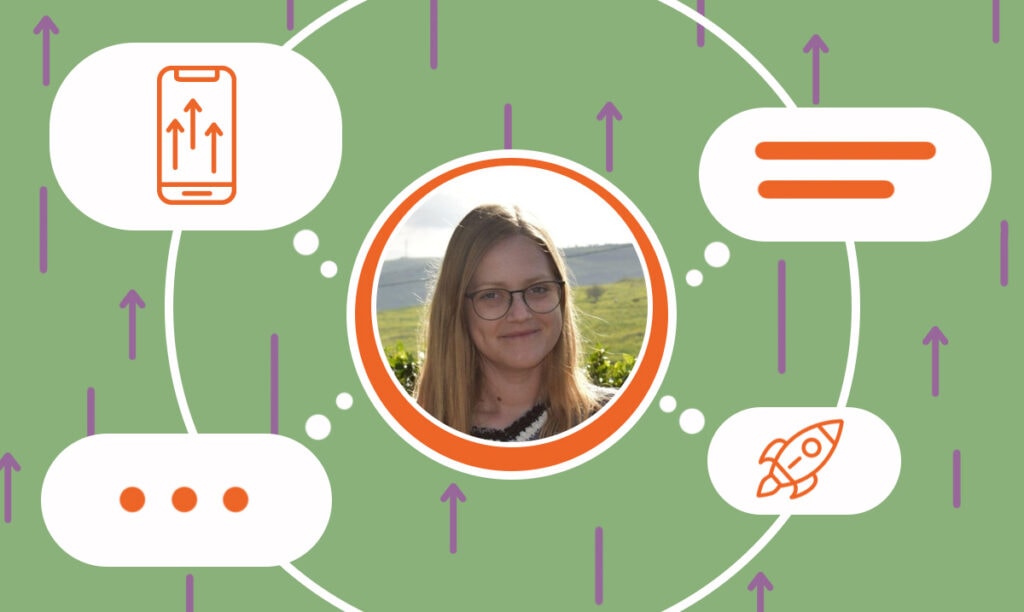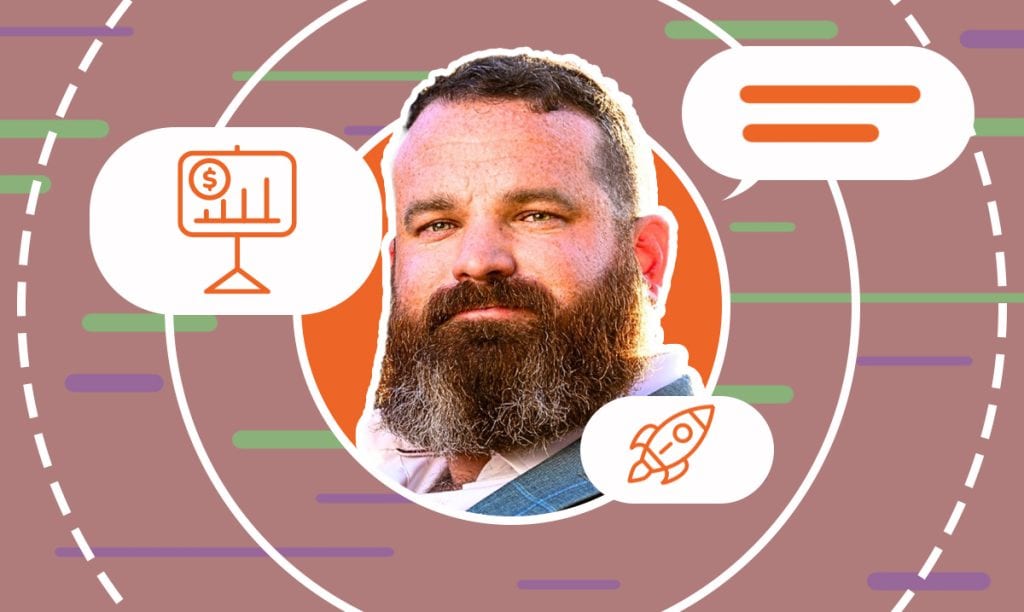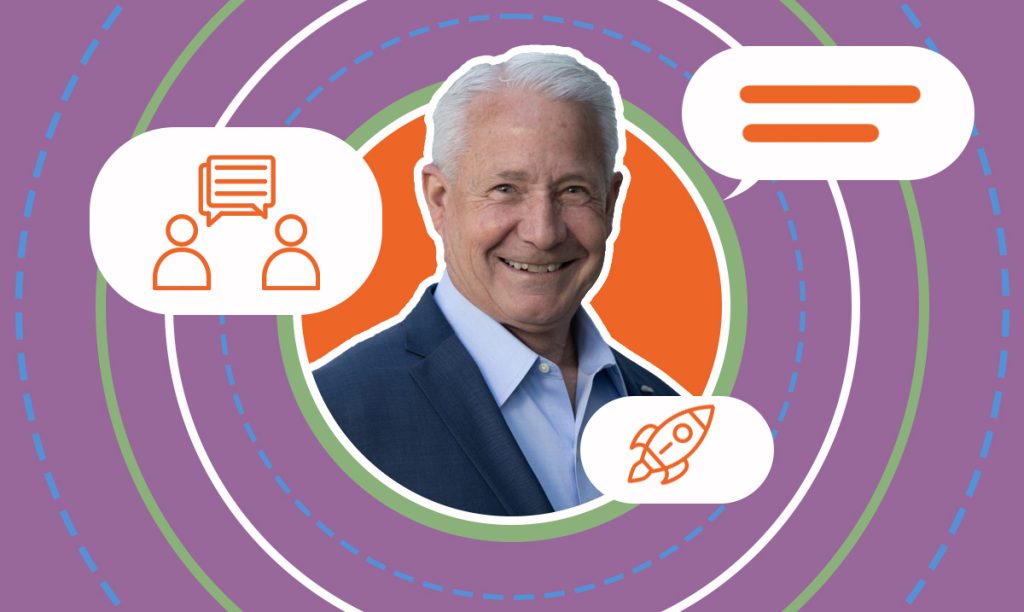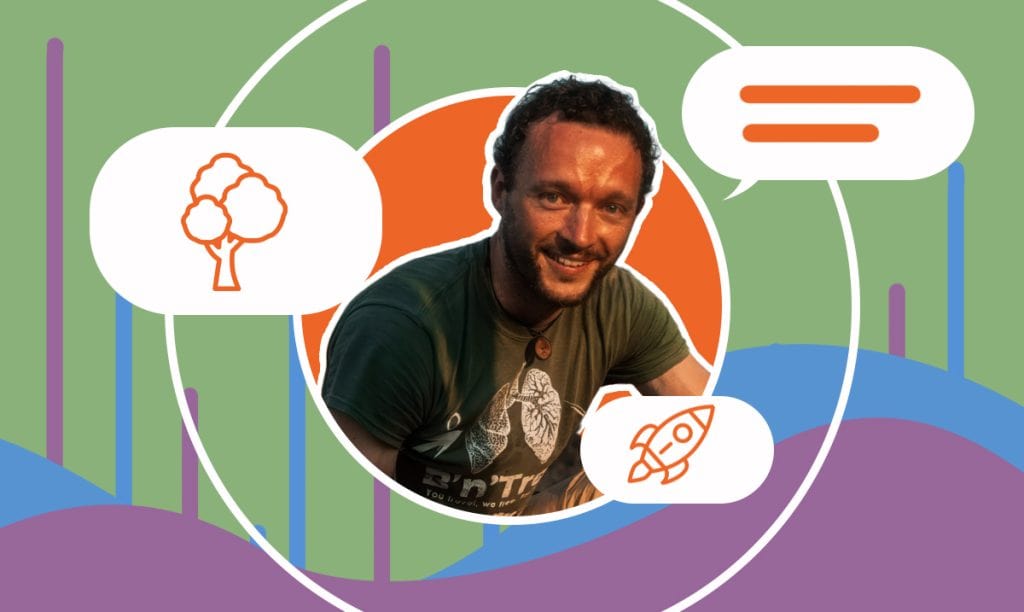In this interview, David Pere, the founder of From Military to Millionaire, shares his inspiring journey from the Marine Corps to financial freedomt ...
How to Build a User-Centric Productivity App: Insights from Planndu
Written by: Howard Tillerman
Howard Tillerman is the Chief Marketing Officer for Step By Step Business and an award-winning marketing professional.
Published on February 7, 2024

Today, we chat with Kate Kontorovich, the product designer at Planndu, a company that has quickly made a mark in the world of productivity apps. With a commitment to enhancing efficiency and focus, Planndu has emerged as a notable player in the tech industry, offering innovative solutions to manage daily tasks and goals.
Kate, with her rich experience and unique perspective on product design, has been instrumental in shaping the app’s user experience, balancing functionality with an intuitive design.
Join us as we delve into Kate’s journey at Planndu, exploring the challenges and triumphs in developing a tool that aims to revolutionize how we approach productivity and time management in our everyday lives.
Inspiration Behind Planndu
SBS – What inspired the initial concept for Planndu, and how did you identify the market need for this app?
Kate – As a product designer, 2021 marked a turning point for both me and my partner, who is a software engineer. We both excitedly transitioned to remote-first roles. It seemed great at the beginning, but soon enough, we faced new challenges at home we hadn’t experienced before. Our once personal space transformed into a hybrid one, blurring the lines between work and relaxation. Laundry, meals, Zoom meetings — everything competed for our attention, and time management became a struggle.
That’s when the idea struck us: A single app for personal and work life, combining task management and a focus timer. To validate our idea, we surveyed colleagues and friends, using an email questionnaire to understand their time management challenges, and the results were clear — we weren’t alone. Difficulty focusing and managing time, especially when working remotely, was a widespread issue.
Diving deeper into the productivity world through books and studies, we came across a revealing fact: Interrupting one’s thought takes an average of 23 minutes to focus back on the original level of concentration. Other studies emphasized the efficiency of focused work periods with breaks. These findings solidified the importance of having a focus timer with well-timed breaks.
Validation and Research
SBS – Can you describe the process of validating your idea through surveys and interviews?
Kate – First, we develop hypotheses and debate them internally within the team. Then, we reach out to individuals of various ages through online productivity forums and social media. We create and distribute a questionnaire via private messages, which helps us understand the potential pain points users face. We aim to pinpoint the root of the problem and gain insights into the features users miss in their task management apps.
Next, we conduct one-on-one interviews, offering small incentives in the form of Amazon gift cards and assuring participants of their anonymity. Chatting on Zoom calls helps us get into users’ mindsets, feelings, and attitudes, shaping our understanding of what the app truly needs to be.
Through analysis and comparison of our findings, we discovered that not everyone shares the same struggles, and some are not interested in technological solutions. This led us to define our niche audience as entrepreneurs, small businesses, and individuals with similar difficulties in maintaining focus and managing tasks.
This process is ongoing. Even after releasing the app, we continuously strive to understand how we can improve and what else we can do to provide our users with a product that helps them manage their time more easily and stay more focused.
Beta Version Development Insights
SBS – How did you approach the development of the beta version, and what were the key learnings from this phase?
Kate – From the beginning, we were confident that our expertise could enable us to, at the very least, produce a decent proof of concept (POC), given our years of experience working on startups with millions of users worldwide. To kickstart the beta phase, our goal was to release continuous early versions, together with a built-in feedback chat. This approach proved challenging as we had to go through a diverse range of opinions. However, I believe it steered us in the right direction early on.
We tried to move quickly and design and develop features on the fly, which resulted in quite a few refactors and rewrites. In one week, we developed this awesome location-based feature but very soon realized that some new restrictions in the Android platform would make this feature almost non-functional unless we used a specific Google API that would cost us a fortune. We didn’t hesitate to drop it all and continue in different directions. We always prioritized core features and added functionalities based on ongoing feedback. Early responsiveness to user feedback became our methodology, and in general, we were quick to learn the importance of clear communication channels and effective collaboration with our end-users.
Post-Launch Challenges and Successes
SBS – Since launching in June 2022, what have been the most significant challenges and successes?
Kate – Bootstrapping was our biggest challenge. At first, we didn’t realize how much effort marketing takes. It was difficult to find time to work on the product itself, and we found ourselves having to wear multiple hats and working on our campaigns late into the night. We took on many complex features to develop while competing with some of the biggest companies that were already well-established in the productivity field with huge marketing budgets. With limited funds, we had to get creative and resourceful, which led us to move quickly and innovate.
Despite these challenges, we’ve built a small but dedicated community, which has been growing steadily by around 12% month-over-month. It brings us great happiness and satisfaction to see that these efforts have yielded results. This gradual growth has allowed us to increase profits and continue developing our product without dipping into our funds or seeking external capital. Today, with thousands of daily users, we’re proud to know that our product is making a meaningful impact by helping people save their valuable time.
Unique Features of Planndu
SBS – How do Planndu’s features differentiate it from other task management tools in the market?
Kate – Our focus timers are fully customizable and have pre-configured timers for Pomodoro and 52/17 intervals. They allow users to attach tasks and keep them visible while staying on the focus screen. We have a simple and intuitive drag-and-drop feature, allowing users to move tasks easily, for example, from the “To-do” to the “Done” tasks section.
We believe that productivity is also affected by our well-being, so we’ve incorporated into our app a meditation timer, a gratitude journal, and habit templates that allow users to take a meditation break or express gratitude for three things each morning.
Since day one, it has been crucial for us to keep our app easy to operate and contain all the essential features for task management. We believe we’ve achieved this goal.
User Base Growth Strategies
SBS – What strategies have you employed to grow your user base since launching?
Kate – Our primary strategy is to focus on the product and achieve a high retention rate. What’s the point of gaining many users and investing a significant amount of time and effort if most of them eventually leave? Therefore, we have invested heavily in the product and its user experience, ensuring it provides the best possible fit for our target audience and retaining users for the long term.
Most of our users come from our website, so we strive to keep it relevant and captivating for visitors. We frequently work on improving the website and conduct A/B tests to achieve optimal results. We also keep our social media updated, offering not only information about our app but also tips and informative content to help individuals improve their productivity. Videos are also working well for us, whether they’re short feature showcases or tutorials on platforms like YouTube or TikTok.
To adapt to the dynamic market, we consistently experiment with new approaches, assessing their effectiveness. This includes tailoring our content to resonate with specific audiences on each social media platform. Our goal is to understand our users’ preferences and behaviors, ensuring that our growth strategies align with their expectations.
Balancing User Interface and Advanced Features
SBS – How do you balance the need for a user-friendly interface with advanced productivity features in the app?
Kate – Navigating this is quite a challenge, as it requires a lengthy research process. We start things off by researching the market for what’s already out there, as it provides us with a reasonable starting point. From there, we seek to inject fresh perspectives and ideas rooted in our hypotheses while considering users’ feedback and their needs.
We always try to empathize with users, stepping into their shoes and diving into the complexities of user experience and psychology. This consideration of how users might react to a particular change is a constant in our decision-making process. That’s why we conduct multiple A/B tests before forming a final opinion about a feature, allowing us to observe in real time how users respond to the change. Moreover, we introduce changes in a way that doesn’t appear as dramatic to the user as possible. We follow user behavior with the initial change, and only when we see no issues, if needed, do we introduce additional changes to enrich the feature.
Influence of Core Values on Business
SBS – What are Planndu’s core values, and how do these influence your business decisions and company culture?
Kate – Our business decisions and company culture are deeply influenced by our core values of passion, integrity, and teamwork. Passion drives us to continuously improve, innovate, and challenge ourselves beyond our comfort zones, creating a stronger team overall. Integrity is fundamental to everything we do. Every decision we make revolves around its impact on our users, ensuring that we uphold their trust and safeguard their information through the latest security and privacy best practices. Teamwork is the backbone of our collaborative efforts, uniting us in our pursuit of success. We value open communication, encouraging all team members to freely express their thoughts and opinions. In essence, it not only shapes our business decisions but also cultivates a company culture that drives us toward excellence and meaningful connections within our team and with our users.
User Feedback and Product Development
SBS – Can you share insights into your approach to user feedback and how it shapes the app’s development?
Kate – User feedback drives most of our new features. It reveals what’s missing in the application and what needs improvement, eventually helping us provide essential features for users. Of course, we also have our own vision for the products’s future. From day one, we enabled analytics. So, alongside user criticism, we often encountered contradictions between what people said and how they used the app. This taught us how to interpret user feedback and identify areas for improvement beyond the words themselves. We value every form of feedback, from appreciation to constructive criticism. It allows us to make adjustments, change course, and sometimes even completely refactor our app.
Future Plans for Planndu
SBS – What are the future plans for Planndu, especially regarding new features or expansions?
Kate – We’re planning to improve the intuitiveness of our app through the implementation of AI technology. It will enable our users to plan their tasks more efficiently and provide a more personalized user experience. Furthermore, we have plans to expand the reach of Planndu, making it accessible to a broader user base. We’re currently in the process of developing an iOS version of the app and are already working on adding more integrations to different apps to make sure Planndu fits smoothly into people’s daily routines. The future looks promising, and we’re committed to delivering an improved semi-automatic planning experience.
Adapting to Industry Changes
SBS – How has your team adapted to changes and challenges in the tech industry, especially in the productivity app market?
Kate – Navigating the productivity app market is not easy and standing out is a real challenge, but at Planndu, we turn challenges into opportunities, and we’ve found our niche and cultivated it. In a tech landscape that’s constantly evolving, adaptation is essential. We not only managed to adapt but also thrive and are not afraid of the changes as they come.
It’s reflected in our continuous effort to learn about what is new in the field and how it can be incorporated into our app. We consistently enrich our knowledge in the areas of productivity, time management, and focus, whether it entails reading newly published studies or books. It’s about staying focused on our goals and making calculated moves to secure our place in this super-competitive landscape. I believe that everyone has a place in this field, and competition is something good that brings new and diverse products.
Advice for Aspiring Tech Entrepreneurs
SBS – What advice would you give to other entrepreneurs looking to launch a tech product in a competitive market?
Kate – My advice is to launch the product early, even if it’s a bit rough around the edges. Seek out those smaller markets where you can make a difference. Deeply understand the users’ pain points, and exercise your judgment because sometimes users might be uncomfortable expressing what they think, or they may not fully understand the product. The right approach is to understand user behavior, analyze how they use your product, and then integrate this information with their feedback. And most importantly, set clear goals and don’t feel bad about making mistakes because it’s part of the growth.
The Future of Digital Task Management
SBS – How do you see the future of digital task management evolving, and what role will Planndu play in it?
Kate – My vision is that AI and automation will take center stage in task management apps, it’s already noticeable that companies started using AI in this field. This change promises a more nuanced understanding of user needs with a focus on intuitive functionalities. Planndu will use algorithms that learn user patterns and adapt to individual preferences. The goal is to make organizing things easier and more personalized for each person. It means using the newest technology to make our app even better!
Subscribe to Our Newsletter
and gain insider access to cutting-edge business insights and trends.
Featured Resources

How David Pere Helps Veterans Achieve Financial Freedom
Published on April 3, 2025
Read Now

Empowering Entrepreneurs with a Consultative Banking Model
Published on January 23, 2025
When it comes to business banking, a one-size-fits-all approach doesn’t cut it — just ask Endeavor Bank. Since its founding in 2017, EndeavorBan ...
Read Now

How Click A Tree Makes Sustainability Simple for Businesses
Published on January 20, 2025
In this interview, Chris Kaiser, the founder and CEO of Click A Tree, shares his journey of creating a company dedicated to making sustainabilityacc ...
Read Now
Comments